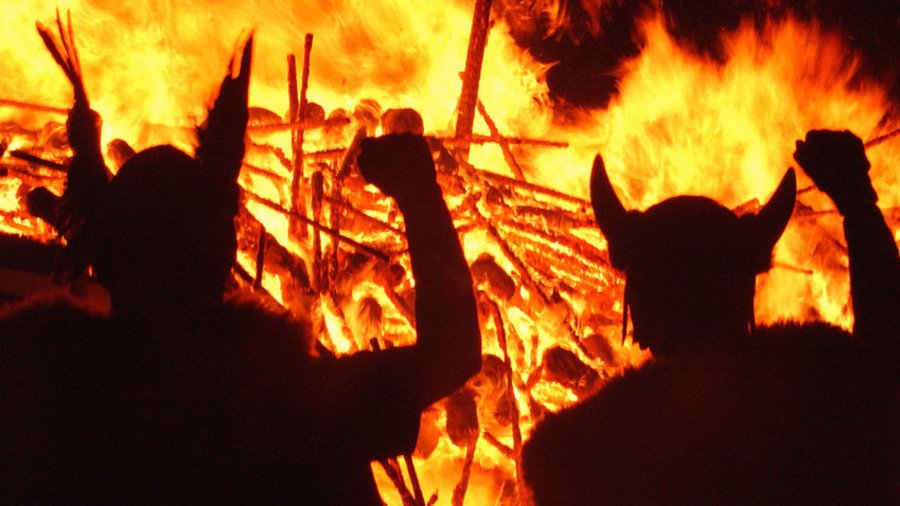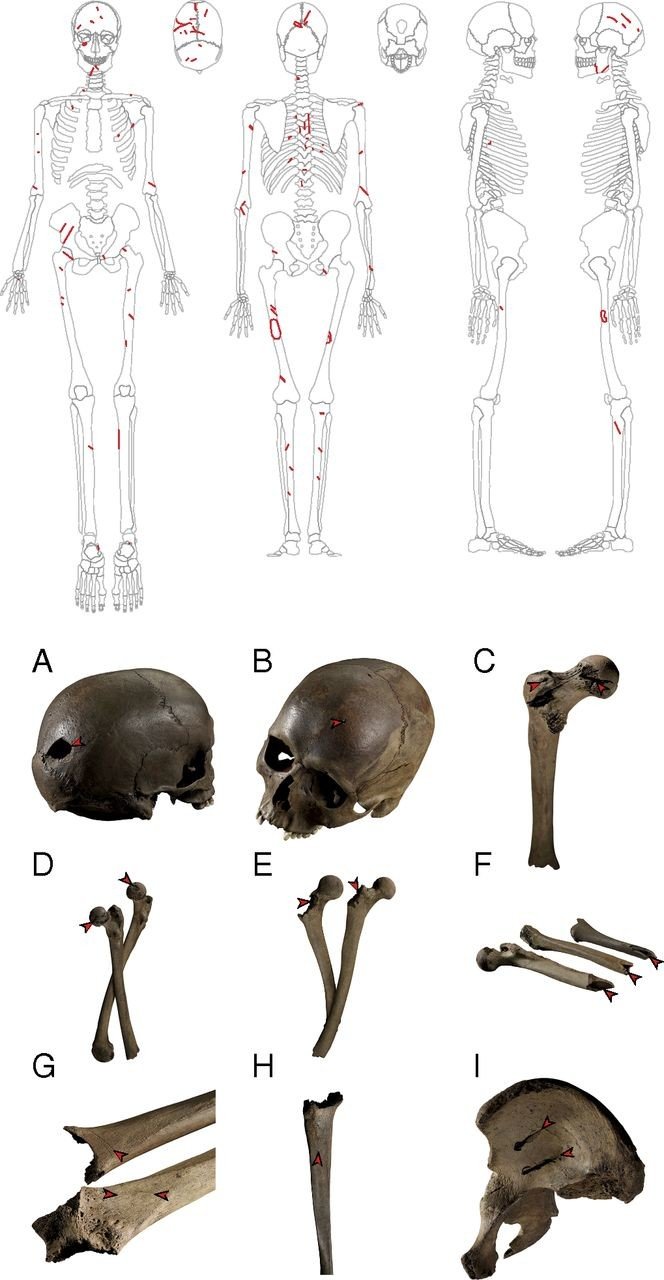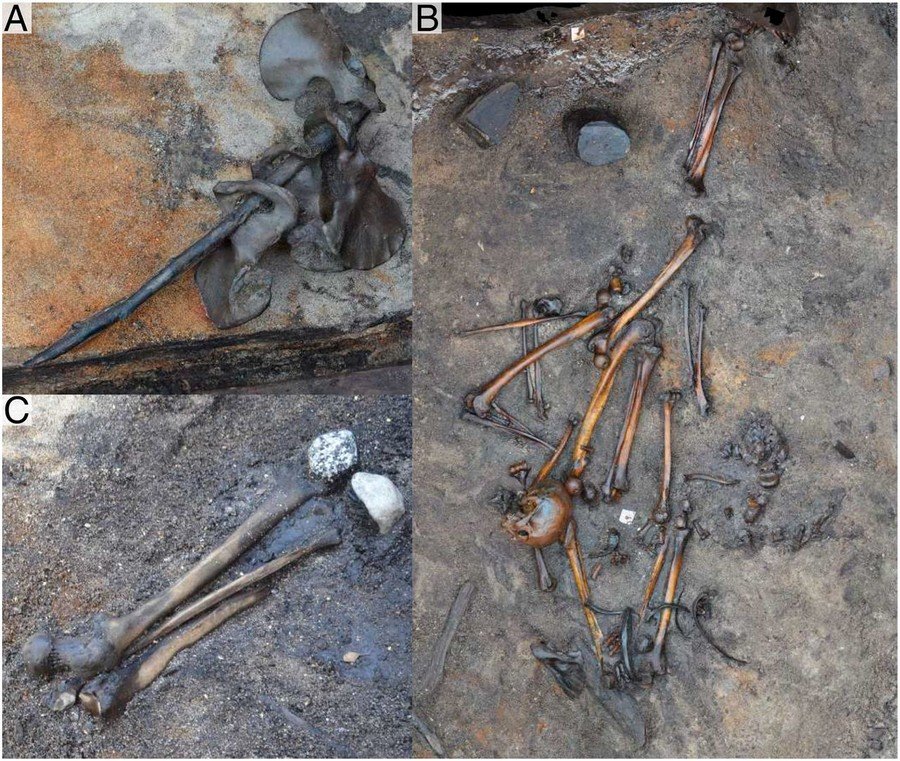‘Comprehensive slaughter’: Barbarian savagery unearthed in 1,000yo bones (PHOTOS)

A barbarian mass grave dating from the first century CE shows the “comprehensive slaughter” of the local young, male population and how their corpses were handled in the aftermath, according to the team that uncovered them.
The violent and ritualized behavior of barbarians after battles became the stuff of legend. Before the Romans, however, we have little to no written accounts of barbarian warfare, and human remains were rarely well-preserved in situ at the battlegrounds where the barbarian warriors fell.
READ MORE: Sweden’s 8,000yo skulls were brutally smashed and mounted on stakes – study
In 2009 and 2014, a team of archaeologists from Aarhus University and Moesgaard Museum meticulously excavated, cleaned and studied 2,095 bones and bone fragments from the Alken Enge wetlands in the Illerup River Valley in central Denmark. Their findings have now been published in the scientific journal PNAS.
The archaeologists used radiocarbon dating to determine that all of the remains and their weapons were from a single event. Many had severe trauma which hadn't healed, indicating that they received the wounds shortly before death. The skeletons also did not show signs of healed trauma, indicating the warriors were inexperienced in battle.

The bones also show significant damage from animals gnawing on them, which led the team to believe the remains had been left exposed to the elements for up to a year before being disposed of in the lake.
The find, scattered across an area of approximately 75 hectares (0.75 sq km), is the earliest and is also believed to be the largest. Based on how the corpses were scattered, the team were able to identify the bones of at least 82 individuals and estimate a total army strength of roughly 380 warriors; a number which greatly exceeds the size of any singular village in the area and one that is four times larger than the next biggest army from the period, unearthed at Hjortspring Mose bog, which was just 80 to 100 warriors strong.
A total of seven spearheads, an axe and fragments of swords and shields were identified. All of the weapons were damaged and no other personal artifacts remain, indicating that, to the victors went the spoils. While the weapons are local, the exact affiliation of the dead warriors has yet to be determined.

The researchers discovered almost no intact skulls but did unearth a multitude of fragments, indicating that the skulls were crushed post mortem. The cut marks found on the bones show that whoever moved the bodies dismembered them by severing the ligaments.
Mysterious mass grave likely contained 300 Vikings from ‘Great Heathen Army’ https://t.co/ESzh7fQGv7pic.twitter.com/qd2Se2XtBD
— RT (@RT_com) February 4, 2018
"Alken Enge provides unequivocal evidence that the people in Northern Germania had systematic and deliberate ways of clearing battlefields," the team writes. “Practices of corporeal dismemberment, modification, and bone assemblage composition suggest a ritual dimension in the treatment of the human corporeal remain.
Like this story? Share it with a friend!













